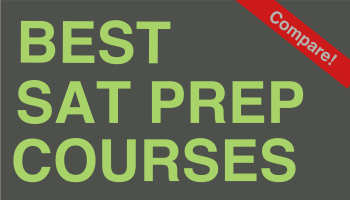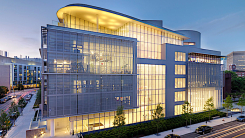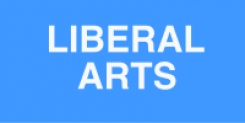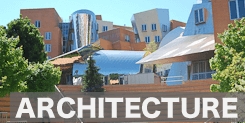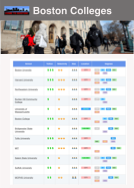A liberal arts education is a classic form of education that focuses on the humanities, social science, natural science, and formal science. The central idea of a liberal arts education is to provide a well-rounded educational experience. In universities, research is often the main focus, and many times graduate students are teaching classes. But in liberal arts colleges, more importance is placed on student-tteacher interaction. This means that classes are taught by faculty, giving more opportunity for student interaction and mentoring. It also means smaller class sizes with optimal teacher/student ratios.
The Boston area is well known for its liberal arts colleges. In fact, there are over 15 liberal arts schools in the Boston area, and there are many colleges and universities with liberal arts undergraduate education without being considered typical liberal arts colleges.
So the question arises: how effective is liberal arts education in today’s bottom-line-oriented society?
Advantages of a Liberal Arts Education
- Broad-based knowledge: Liberal arts programmes typically require students to take a wide range of courses in various disciplines, including the humanities, social sciences, natural sciences, and the arts. This breadth of knowledge can provide a well-rounded education that fosters critical thinking and a deeper understanding of the world.
- Critical thinking skills: Liberal arts education often emphasises critical thinking, problem-solving, and analytical skills. Students learn to evaluate information, think critically, and make informed decisions, which are valuable skills in many professions.
- Communication skills: Liberal arts programmes typically emphasise written and oral communication skills. Graduates are often skilled at expressing their ideas clearly and persuasively, which can be beneficial in many career paths.
- Adaptability: A liberal arts education equips students with a versatile skill set that can be applied to a wide range of careers. Graduates often have the ability to adapt to changing job markets and take on various roles.
- Lifelong learning: Liberal arts education encourages a love of learning and a curiosity about the world. Graduates are often more inclined to continue their education and pursue lifelong learning opportunities.
- Well-rounded individuals: Liberal arts graduates often possess a greater appreciation for art, culture, and the humanities, making them more well-rounded individuals who can contribute to society in meaningful ways.
- Preparation for graduate school: A liberal arts education can provide a strong foundation for further education in fields like law, medicine, business, or academia.
Disadvantages of a Liberal Arts Education
- Limited specialisation: Some argue that a liberal arts education may not provide as much specialised knowledge or technical skills as a more focused degree program. This can be a disadvantage for individuals pursuing careers that require specific expertise.
- Career readiness: Critics suggest that liberal arts graduates may face challenges in finding immediate job opportunities directly related to their degree, especially in fields like STEM (Science, Technology, Engineering, and Mathematics).
- Financial considerations: The cost of a liberal arts education can be substantial, and graduates may face student loan debt without the guarantee of high-paying jobs right after graduation.
- Misalignment with career goals: For individuals with clear career goals that require specialised training or technical skills, a liberal arts education may not align with their objectives.
- Perceived lack of practicality: Some employers may undervalue liberal arts degrees, particularly in fields where technical skills are highly sought after.
Real-Life Outcomes for Liberal Arts Graduates
Outcome statistics for liberal arts education can vary widely depending on factors such as the specific institution, the individual student's choices, and the economic conditions at the time of graduation. However, here are some general trends and statistics associated with liberal arts education:
- Employment Rates: Liberal arts graduates often have competitive employment rates. According to data from the Association of American Colleges and Universities (AAC&U), liberal arts graduates have relatively low unemployment rates, and many find jobs within six months of graduation.
- Earnings: While liberal arts graduates may not have the highest starting salaries compared to graduates in some STEM fields or professional programmes, their earnings tend to increase over time. Over the course of their careers, liberal arts majors can achieve significant earning potential, particularly if they pursue advanced degrees or gain experience in their chosen fields.
- Graduate School: A significant number of liberal arts graduates choose to pursue advanced degrees. Many go on to graduate or professional programmes in fields like law, medicine, business, education, or the humanities.
- Versatility: Liberal arts graduates often find employment in a wide range of fields, including education, non-profit organisations, government, communications, marketing, business, and more. The versatility of their skills allows them to adapt to different roles and industries.
- Job Satisfaction: Studies have shown that liberal arts graduates often report high levels of job satisfaction. They tend to value their ability to think critically, communicate effectively, and adapt to new challenges.
- Entrepreneurship: Some liberal arts graduates choose to start their own businesses or pursue entrepreneurial ventures. The ability to think creatively and solve complex problems can be an asset in entrepreneurship.
- Community Engagement: Many liberal arts graduates are active in their communities and engage in volunteer work and civic activities. They often have a strong sense of social responsibility.
Summary
In summary, a liberal arts education offers a well-rounded and holistic approach to learning, emphasising critical thinking, communication skills, and a broad base of knowledge. However, it may not be the best fit for everyone, particularly those with highly specialised career goals or concerns about the quickest return on investment. Ultimately, the value of a liberal arts education depends on an individual's interests, career aspirations, and personal preferences.





